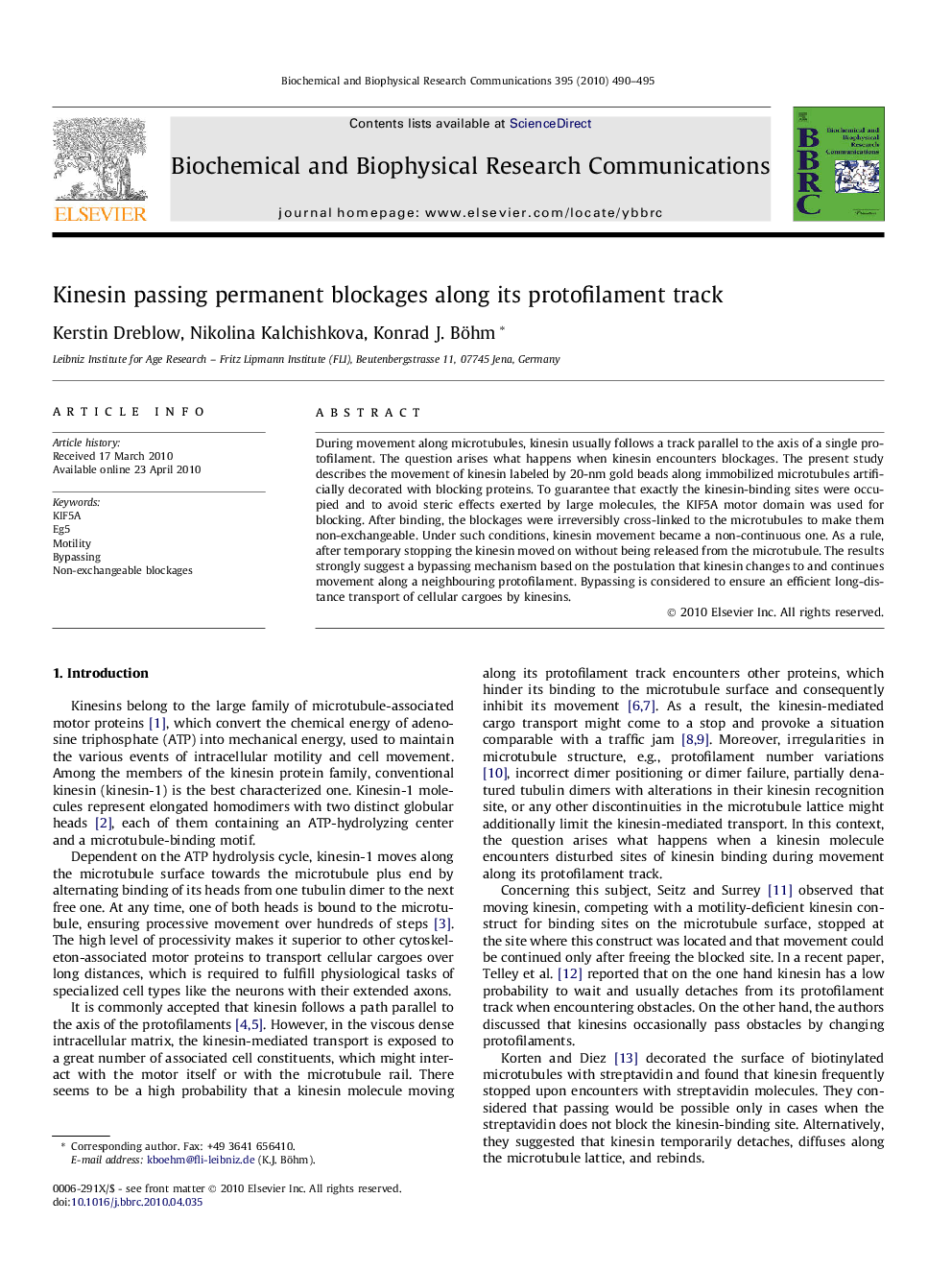| Article ID | Journal | Published Year | Pages | File Type |
|---|---|---|---|---|
| 1932311 | Biochemical and Biophysical Research Communications | 2010 | 6 Pages |
During movement along microtubules, kinesin usually follows a track parallel to the axis of a single protofilament. The question arises what happens when kinesin encounters blockages. The present study describes the movement of kinesin labeled by 20-nm gold beads along immobilized microtubules artificially decorated with blocking proteins. To guarantee that exactly the kinesin-binding sites were occupied and to avoid steric effects exerted by large molecules, the KIF5A motor domain was used for blocking. After binding, the blockages were irreversibly cross-linked to the microtubules to make them non-exchangeable. Under such conditions, kinesin movement became a non-continuous one. As a rule, after temporary stopping the kinesin moved on without being released from the microtubule. The results strongly suggest a bypassing mechanism based on the postulation that kinesin changes to and continues movement along a neighbouring protofilament. Bypassing is considered to ensure an efficient long-distance transport of cellular cargoes by kinesins.
